Understanding Good Pearls: Traits and Types Explained
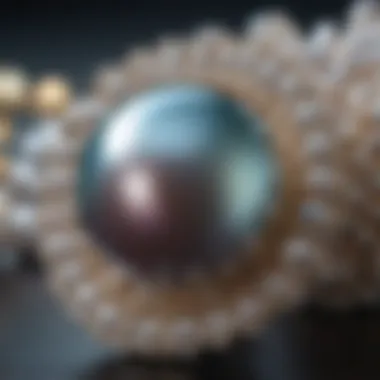
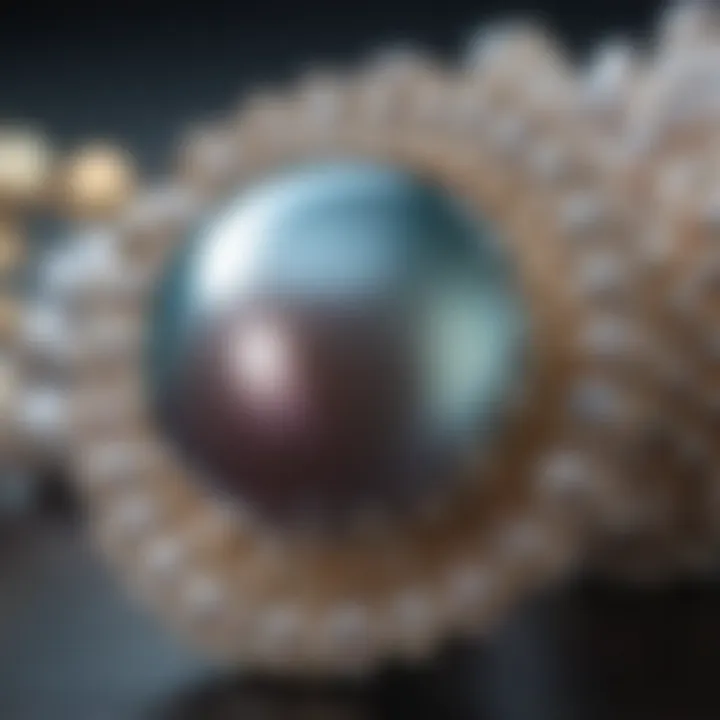
Intro
In the world of gemstones, pearls hold a distinct position. Unlike traditional minerals, they are organic gems, formed within the soft tissue of mollusks. This unique origin sets pearls apart, making them intriguing subjects for both collectors and connoisseurs.
Pearls also come with a rich history, spanning cultures and centuries. They have adorned royalty, captivated collectors, and styled jewelry designers. Achieving a profound understanding of what makes a pearl 'good' requires examining its various characteristics, types, and cultural significance. With a deep dive into these aspects, enthusiasts can better appreciate the beauty and value of pearls.
Gemstone Overview
Definition and Characteristics
A pearl is essentially a hard object produced within the soft tissues of a living shelled mollusk. The appealing qualities of pearls arise from their unique formation process, leading to attributes such as luster, size, shape, and surface texture.
Among these qualities, luster is perhaps the most crucial. It refers to how well a pearl reflects light, creating a soft glow that can appear almost otherworldly. Other significant features include the pearl's surface finish, which can be smooth or exhibit imperfections, affecting both aesthetic and value.
Classification of Gemstones
Pearls can be classified primarily into two categories: natural and cultured pearls. Natural pearls form spontaneously in the wild, while cultured pearls are nurtured through human intervention. The latter has become the mainstay of the pearl market due to the superior control it provides over quality and supply.
In addition to these, pearls can also be distinguished based on their types. For instance, Akoya pearls are known for their high luster, while Tahitian pearls often boast darker shades. The classification extends beyond simple nomenclature; different types have varying cultural significances and appeal.
"Understanding pearls is not just about their beauty, but also their story, market, and the craftsmanship behind jewelry design."
Properties of Gemstones
Physical Properties
The physical attributes of pearls contribute significantly to their classification and value. Size can vary, impacting perceptions of rarity. Shape is equally important; ideally round pearls are usually deemed most desirable, while baroque shapes may be favored for their uniqueness in certain contexts.
Furthermore, the surface quality also plays a pivotal role. Pearls free from blemishes are valued higher than those with visible scars or pits. The color of the pearl is another captivating feature, with shades ranging from white and cream to black and gold, influencing cultural symbolism and market trends.
Chemical Properties
From a chemical standpoint, pearls primarily consist of calcium carbonate, a compound that lends itself to the pearl's structure and resilience. The aragonite and conchiolin make up the layers of a pearl, providing both beauty and durability. Interestingly, the nacre, the shiny inner layer of the shell, is what ultimately contributes to the pearl’s luster; thicker nacre layers typically indicate higher quality pearls.
The fascinating journey of a pearl from the ocean floor to jewelry showcases a timeless elegance, and by grasping these fundamental principles, one can navigate the intricate world of pearls with confidence and respect.
The Essence of Pearls
The role of pearls in both fashion and culture transcends the aesthetic. Understanding what constitutes a quality pearl is essential for enthusiasts and collectors alike. This section aims to clarify critical aspects of pearls, including their formation and the distinctions between natural and cultured varieties. Such knowledge not only enhances appreciation for these gems but also guides informed purchasing decisions. Furthermore, recognizing the unique characteristics of pearls fosters a deeper connection with their historical and cultural significance.
Definition and Formation
Pearls are organic gems formed within the soft tissue of mollusks, primarily oysters and mussels. The process begins when an irritant, often a grain of sand or a parasite, enters the shell. In defense, the mollusk secretes layers of nacre, a combination of aragonite and conchiolin, which eventually builds up around the irritant. The time taken for this formation varies, resulting in pearls of differing sizes and qualities.
The formation can take several years, with some pearls developing for over a decade. The quality of the nacre significantly impacts the pearl's luster and surface smoothness. A pearl’s type, shape, and overall characteristics derive from the environment of the mollusk and the conditions it experiences during formation.
Natural vs. Cultured Pearls
Natural pearls are rare, formed without any human intervention. They are sought after for their uniqueness and the natural processes involved in their creation. In contrast, cultured pearls are initiated by human operators who introduce the irritant into the mollusk. This method ensures more consistent results, both in terms of quality and supply.
Here are key differences between the two types:
- Formation
- Rarity
- Value Consideration
- Natural Pearls: Occurs solely through natural processes.
- Cultured Pearls: Involves human intervention for consistent output.

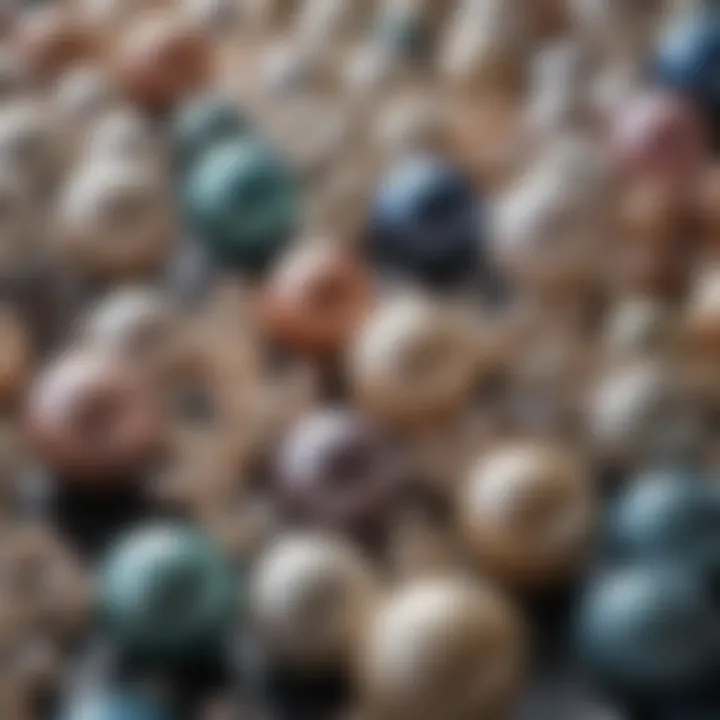
- Natural Pearls: Extremely rare and often more valuable.
- Cultured Pearls: More abundantly available due to controlled farming.
- Natural Pearls: Highly prized by collectors.
- Cultured Pearls: Generally more accessible but can still be valuable based on quality.
"Understanding the differences between natural and cultured pearls can influence both appreciation and choice when selecting gems."
Overall, both types offer unique advantages and cater to different aspects of the jewelry market, making them valuable in their own right. Recognizing the importance of these attributes enhances the overall understanding of pearls and their significance in the world of gemstones.
Evaluating Pearl Quality
Evaluating the quality of pearls is crucial for anyone interested in purchasing or appreciating these gemstones. The quality assessment determines not only the aesthetic value of the pearl but also its market price. Several key elements influence the overall quality of pearls, which include luster, surface texture, shape, size, and color. Understanding these factors can guide consumers and collectors alike in making informed decisions.
High-quality pearls not only captivate visually but also hold greater significance in the jewelry market. Pearls are often considered an investment. Therefore, knowledge in this area helps to differentiate between high-grade and inferior options, providing a basis for appreciation and selection.
Luster and Surface Quality
Luster refers to how light reflects off the surface of a pearl. This quality is critical when assessing a pearl's overall appeal. A pearl with high luster has a bright, reflective surface that enhances its beauty. Surface quality is also significant. Pearls with smooth surfaces are generally more desirable. Any blemishes or imperfections can diminish a pearl's value.
When inspecting a pearl, one should look for:
- High Luster: A pearl should have a glossy appearance, reflecting light well.
- Smooth Surface: The presence of blemishes, scratches, or spots can indicate lower quality.
- Transparency: While the best pearls have thick nacre layers, translucence is also a quality marker.
Collectors and enthusiasts often agree that luster and surface quality are among the top criteria for judging a good pearl.
Shape and Size Considerations
Pearls come in various shapes and sizes, affecting their desirability. Round pearls are the most sought after, as they are viewed as epitomes of perfection. However, other shapes like oval, baroque, and semi-baroque are also appreciated, particularly for unique designs.
Size is important too; larger pearls tend to command higher prices. However, the market also values smaller pearls for their distinct appearance and craftsmanship in certain jewelry styles. Notable points include:
- Round vs. Irregular Shapes: Round pearls are preferred but some artists favor unique shapes for artistic pieces.
- Size Matters: Larger pearls may be rarer, thus more valuable.
Understanding these factors aids collectors in identifying good pearls while appreciating diversity in designs.
Color Variations and Their Impact
Pearls exhibit a stunning array of colors, influenced by their type, origin, and environment. The color can significantly impact a pearl's desirability and value. Each type of pearl has characteristic colors that affect their marketability.
For example, Tahitian pearls are famous for their dark, exotic hues ranging from gray to peacock green. Akoya pearls, on the other hand, tend to be cream or white with rosy overtones. It is important to note:
- Natural Colors: Purely natural-colored pearls are generally more valuable than dyed ones.
- Overtones: Some pearls exhibit secondary colors that can enhance their aesthetic appeal.
Every pearl's color contributes to its uniqueness and should be considered during evaluation.
Types of Pearls
Understanding the different types of pearls is essential for anyone interested in jewelry, gemstones, or collecting. Each type offers unique qualities and characteristics that appeal to various audiences. From the luster of a pearl to its size and origin, the type influences its market value and cultural significance. Knowing the distinctions can help enthusiasts make informed decisions when purchasing or creating jewelry.
South Sea Pearls
South Sea pearls are renowned for their large size and luxurious appearance. Cultivated primarily in the warm waters of Australia and Indonesia, these pearls range from 9mm to 20mm in diameter, making them among the largest in the pearl industry. They often exhibit a creamy white or golden hue, which adds to their appeal.
Their exceptional luster is a significant reason for their high value. South Sea pearls are created by the Pinctada maxima oyster. The depth of color and luster can vary based on the individual oyster, making each pearl unique. They tend to have thick nacre, which also contributes to their durability and shine.
Tahitian Pearls
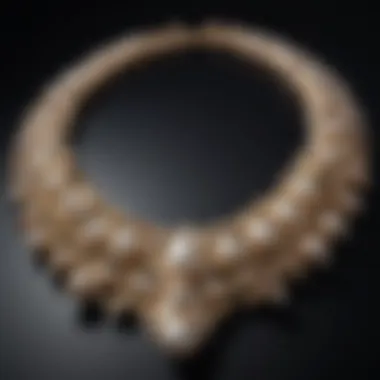
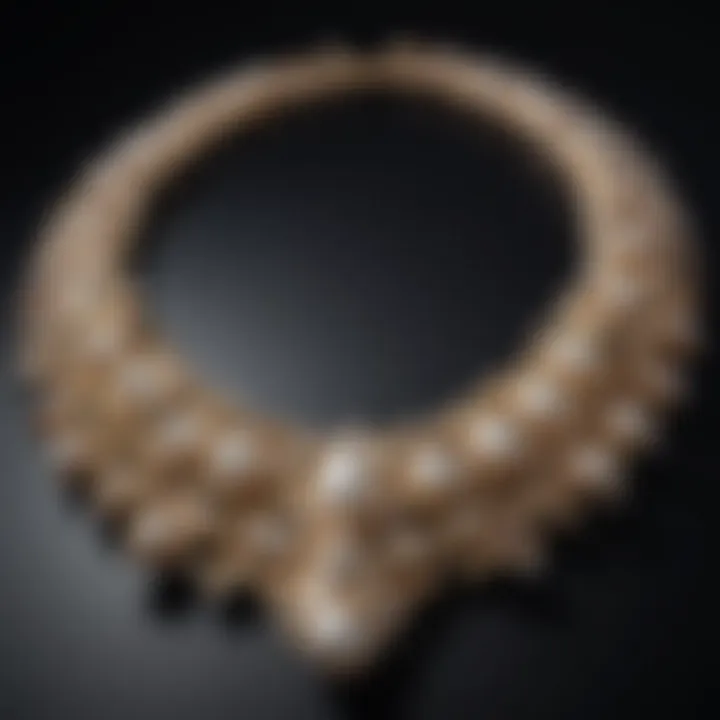
Tahitian pearls are also prominent in the pearl market, particularly known for their unique dark colors. Sourced primarily from Tahiti, these pearls come in hues like black, gray, and green. They usually measure between 8mm and 18mm in size, with larger specimens being less common.
The value of Tahitian pearls is often influenced by their color and overtone. They can display a remarkable range of colors due to the different types of oysters they come from, such as the Pinctada margaritifera. The luster is vibrant, and their exotic look makes them a preferred choice for modern jewelry designs.
Akoya Pearls
Akoya pearls are perhaps the most classic choice for pearl jewelry. Grown in Japan, the Akoya oyster produces round pearls that are valued for their high luster and beautiful white hue, often with rose or silver overtones. Their size typically ranges from 6mm to 9mm, making them smaller than South Sea or Tahitian pearls.
These pearls are known for their perfect round shapes and mirror-like finish. The combination of size, shape, and luster makes Akoya pearls ideal for traditional necklaces and earrings. They represent timeless elegance and are often the first choice for pearl jewelry beginners.
Freshwater Pearls
Freshwater pearls are cultivated in lakes and rivers, primarily in China. They are available in various shapes, colors, and sizes, with dimensions ranging between 5mm and 15mm. What sets them apart is their lower price point, making them accessible to a wider audience.
Freshwater pearls can be round, semi-round, or baroque, and they often come in shades of white, lavender, and peach. Their unique shapes and colors provide endless options for jewelry designers. However, while their luster may not match that of saltwater pearls, many people appreciate their irregularities, as each pearl tells a different story.
Baroque Pearls
Baroque pearls stand out due to their distinct and irregular shapes. They can originate from both freshwater and saltwater sources. Their sizes can be quite large, and they can display a variety of colors, often with incredible luster.
These pearls are celebrated for their uniqueness, as no two baroque pearls are ever the same. Jewelry designers value them for their artistic possibilities. Whether used in statement pieces or subtle accents, baroque pearls offer an unconventional charm that attracts many admirers.
"The type of pearl chosen greatly influences the overall aesthetic and value of the piece, highlighting the importance of understanding the options available."
In summary, the types of pearls available each have specific characteristics that cater to different tastes and preferences. Knowing these distinctions allows gem enthusiasts, collectors, and jewelry designers to appreciate the various attributes pearls offer.
Pearl Jewelry Trends
The world of pearl jewelry is ever-evolving, reflecting cultural shifts, design innovations, and consumer preferences. Understanding current trends in pearl jewelry provides insights into how these timeless gems are perceived and appreciated today. Exploring styles and cultural significance can elevate the appreciation for pearls beyond their aesthetics.
Contemporary Designs
Modern pearl jewelry often breaks away from traditional expectations. Jewelry designers are experimenting with asymmetrical styles, mixed materials, and unique settings. The use of unexpected combinations, such as pairing pearls with leather or unconventional gemstones, broadens the appeal. Current trends favor minimalist designs that highlight the pearl’s natural beauty without overwhelming it.
In addition, reclaimed materials are making waves in contemporary pearl designs. Artists aim for sustainability while maintaining elegance, appealing to eco-conscious consumers. These new trends celebrate individual expression and invite a more personalized approach to wearing pearls.
Classic Styles and Their Enduring Appeal
Despite the shifts towards modernity, classic styles remain a solid foundation in pearl jewelry. Timeless pieces like the single pearl stud earrings or the classic pearl strand necklace continue to delight. Their enduring appeal lies in their versatility and elegance, making them suitable for both everyday wear and formal occasions.
Pearl stringing techniques have also evolved. A return to intricate knotting methods elevates simplicity, adding a touch of sophistication. This balance of style and tradition ensures that classic pieces resonate with both older generations and younger jewelry enthusiasts.
Cultural and Ritualistic Uses
Pearls have long held cultural significance across various societies. From bridal jewelry to ceremonial objects, pearls are used in rituals and celebrations. Many cultures believe in pearls’ ability to promote purity and wealth. For example, in Asian cultures, pearls symbolize wisdom and are often given as gifts during significant life events.
Furthermore, the symbolic meanings attached to pearls also play a role in how jewelry is designed and cherished. Jewelers often draw inspiration from these traditions, creating pieces that resonate with specific cultural narratives, thus forming a deeper connection with the wearer.
"Pearls are not just adornments; they carry stories and meanings that transcend their mere physical beauty."
In the realm of pearl jewelry trends, mixing contemporary and classical elements with cultural narratives creates pieces that tell unique stories. Understanding these trends is essential for collectors and enthusiasts who wish to appreciate pearls beyond their surface value. By exploring these elements, one can appreciate the deeper significance of pearls in today's jewelry landscape.
Ethical Considerations in Pearl Sourcing
Pearl sourcing has become a critical topic within the jewelry industry. Understanding the ethical implications of how pearls are obtained is key for consumers who wish to make informed choices. Ethical sourcing encompasses various facets such as sustainability and fair trade, which are integral in ensuring that the beauty of pearls does not come at a high cost to the environment or the people involved in their production.
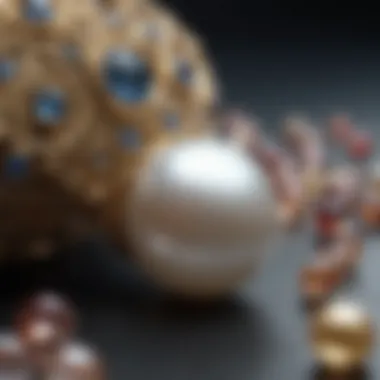
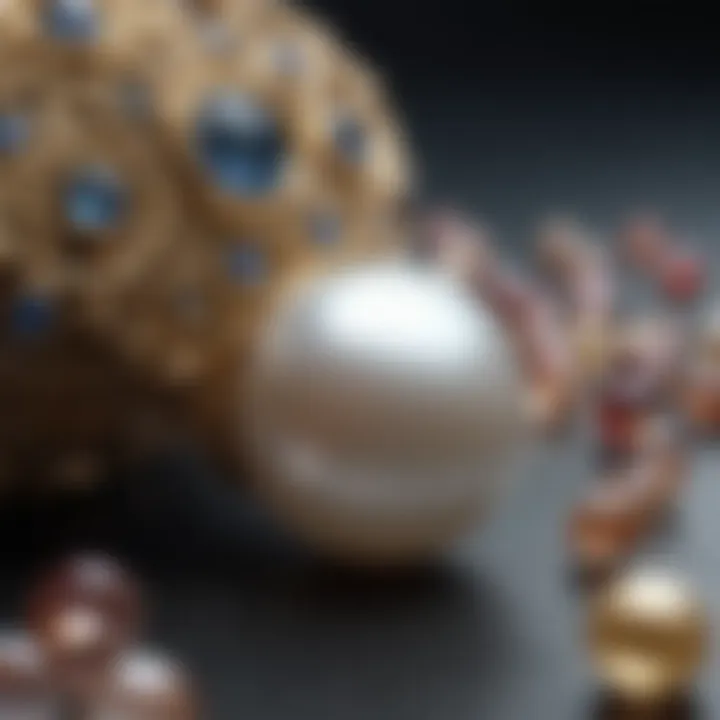
Adopting ethical practices not only supports biodiversity but also respects the communities and cultures associated with pearl farming. As interest in pearls grows, so does the necessity to promote responsible sourcing that prioritizes long-term welfare over short-term gain.
According to a report by the International Pearl Association, sustainable practices in pearl farming have been shown to increase the quality of pearls and the health of marine ecosystems.
Sustainable Fishing Practices
Sustainable fishing practices are essential for the future of pearling. These methods aim to minimize environmental impact and ensure the long-term health of marine ecosystems. For example, many pearl farms are transitioning towards organic farming techniques, which avoid harmful chemicals and fertilizers. This fosters a cleaner environment for marine life.
Another critical aspect is the regulation of harvesting techniques. Limiting the number of oysters harvested and ensuring that the natural breeding cycles are respected helps maintain the population of these mollusks. Inviting local communities in decision-making processes also promotes sustainable fishing practices. This participation encourages respect for local ecosystems and traditions, aligning economic goals with environmental responsibility.
Fair Trade and Labor Practices
Fair trade and labor practices have been gaining recognition within the pearl industry. Jewelry buyers are now more aware of the conditions under which pearls are produced. Fair trade ensures that workers receive a just wage and work in safe conditions. Many pearl farms have adopted certifications that guarantee labor rights.
Additionally, fostering local production not only aids the economy but also strengthens the connection between artisans and their work. Providing access to education and health services for workers within pearl producing communities creates a positive feedback loop, driving up the quality of work and products produced.
In summary, understanding ethical considerations in pearl sourcing shines a light on the importance of sustainable practices and fair labor. As consumers become more conscious, they can encourage the industry to uphold high ethical standards, ensuring that pearls are cherished not just for their beauty but also for the values they represent.
The Mystical Attributes of Pearls
The relevance of mystical attributes in pearls cannot be overstated. Pearls have long been associated with various spiritual realms. They transcend mere adornment to embody deeper meanings within numerous cultures. This section will provide a closer look at the spiritual significance of pearls and their believed healing properties.
Spiritual Significance
Many traditions perceive pearls as symbols of purity and wisdom. In different cultures, they hold considerable significance and are often seen as invitations to introspection. The ancient Greeks associated pearls with Aphrodite, the goddess of love, and viewed them as tokens of romance and beauty.
In Eastern cultures, pearls are linked to wisdom. They are thought to enhance one's knowledge and bring clarity. This belief translates into the use of pearls in meditation practices. Some spiritual seekers use pearl jewelry to attract positive energy. They believe this helps with emotional balance and stability, fostering deep connections to oneself and others.
Furthermore, pearls are often involved in rituals and ceremonies that aim to aid personal transformation. Their soft sheen and natural beauty make them coveted in sacred scenarios, suggesting a close relationship between the inner self and outer beauty. The belief that pearls balance emotions underlies many therapeutic approaches today, making them a preferred choice for those seeking harmony in life.
Healing Properties According to Beliefs
Pearls are embraced for their metaphysical properties across different cultures. Many traditions believe they provide various healing benefits. Some suggest that pearls can calm the mind, enhance clarity, and even help in alleviating stress.
Individuals seeking emotional healing often turn to pearls as they are believed to promote a sense of tranquility. Their organic composition resonates with natural vitality, thought to revitalize the spirit. The following are common beliefs surrounding the healing properties of pearls:
- Emotional Balance: Pearls are said to help in stabilizing emotions, particularly during periods of upheaval.
- Intuition Enhancement: Many believe that pearls enhance intuition. They are thought to facilitate clear thinking, allowing for better decision-making.
- Skin Benefits: Some claim pearls in powdered form can be beneficial for the skin, improving its texture and health when used in skincare formulations.
According to traditional views, pearls bridge the gap between the physical and spiritual realms, leading to enhanced life experiences.
Caring for Pearls
Caring for pearls is vital for maintaining their beauty and longevity. Unlike other gemstones, pearls are organic and require special attention. They are sensitive to various environmental factors, including chemicals, heat, and moisture. Proper care can enhance the pearl's natural luster and surface integrity.
When it comes to cleaning and storing pearls, a few specific elements need to be considered. Regular maintenance prevents dirt buildup and damage, allowing pearls to retain their unique shimmer. Below, we delve into the best cleaning techniques and storage recommendations.
Ending
The significance of pearls extends far beyond their aesthetic appeal. This article has highlighted various aspects that contribute to a good pearl, including quality, type, and cultural importance. Understanding these elements enhances one’s appreciation of pearls, making the experience of acquiring or wearing them more meaningful.
The Timeless Appeal of Pearls
Piercing through the ages, pearls have held a unique allure for various cultures. Many consider them symbols of purity and elegance. Their classic beauty enables pearls to traverse varying styles and fashions over time, remaining relevant.
From ancient royalty to modern fashion statements, pearls have showcased versatility. They can be worn in a formal setting or as part of casual attire, which is one of the reasons they appeal to many.
Moreover, pearls hold substantial historical value.
- Cultural Significance: Pearls were once reserved for kings and queens, cementing their status as luxury items.
- Symbol of Love: Traditionally, pearls represent love and fidelity, making them a popular choice for weddings.
The narratives surrounding pearls deepen their desirability. They are not merely gemstones but pieces of history associated with various myths and stories.



